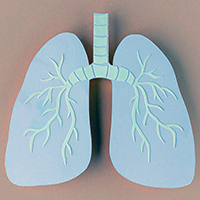Serum KL-6 as predictive and prognostic marker of interstitial lung disease in childhood connective tissue diseases: a pilot study

Submitted: 27 January 2021
Accepted: 27 June 2021
Published: 22 November 2021
Accepted: 27 June 2021
Abstract Views: 6437
PDF: 896
Publisher's note
All claims expressed in this article are solely those of the authors and do not necessarily represent those of their affiliated organizations, or those of the publisher, the editors and the reviewers. Any product that may be evaluated in this article or claim that may be made by its manufacturer is not guaranteed or endorsed by the publisher.
All claims expressed in this article are solely those of the authors and do not necessarily represent those of their affiliated organizations, or those of the publisher, the editors and the reviewers. Any product that may be evaluated in this article or claim that may be made by its manufacturer is not guaranteed or endorsed by the publisher.
Similar Articles
- G. Pasero, P. Marson, B. Gatto, A short history of anti-rheumatic therapy - VII. Biological agents , Reumatismo: Vol. 63 No. 3 (2011)
- L. Fioravante da Silveira, A. Zago, D. Zanchet, D. Chemello, Macrophage activation syndrome in a patient with systemic lupus erythematosus undergoing cyclophosphamide treatment: a case report , Reumatismo: Vol. 75 No. 2 (2023)
- N. Del Papa, M. Cortiana, W. Maglione, D.P. Comina, I. Silvestris, L. Moronetti Mazzeo, N. Fracchiolla, F. Fantini, A. Cortelezzi, Raised levels of circulating endothelial cells in systemic sclerosis , Reumatismo: Vol. 57 No. 1 (2005)
- L. Bazzichi, C. Giacomelli, A. Rossi, F. Sernissi, P. Scarpellini, A. Consensi, S. Bombardieri, Fibromyalgia and sexual problems , Reumatismo: Vol. 64 No. 4 (2012)
- M. Muratore, L. Quarta, L. Raho, D. Costanza, S. Frisenda, F. Calcagnile, A. Grimaldi, E. Quarta, D. Carati, M. Guido, A. Zizza, G. Alessandrini, Management of cutaneous discomfort in patients with scleroderma: a clinical trial , Reumatismo: Vol. 65 No. 5 (2013)
- F.M. Perrotta, A. Delle Sedie, S. Scriffignano, P. Volpe, E. Cordisco, N. Milano, M. Gabini, E. Lubrano, Remission, low disease activity and improvement of pain and function in psoriatic arthritis patients treated with IL-12/23 and IL-17 inhibitors. A multicenter prospective study , Reumatismo: Vol. 72 No. 1 (2020)
- M.A. Mortada, L.I. Kotb, Y.A. Amer, Impact of ultrasonography detected quadriceps calcific tendinopathy on pain and function in patients with primary knee osteoarthritis , Reumatismo: Vol. 73 No. 2 (2021)
- F. Manguso, A. D’Arienzo, C. Astarita, F.P. D’Armiento, D. Gargano, R. Peluso, T. Staiano, F. Ayala, G. Mazzacca, R. Scarpa, Seronegative spondyloarthropathies and allergic diseases in patients with ulcerative colitis , Reumatismo: Vol. 54 No. 1 (2002)
- D.D. Gladman, BIOLOGIC THERAPY OF PSORIATIC ARTHRITIS , Reumatismo: Vol. 59 No. s1 (2007)
- G. Lapadula, G. Ferraccioli, C. Ferri, L. Punzi, F. Trotta, GISEA: an Italian biological agents registry in rheumatology , Reumatismo: Vol. 63 No. 3 (2011)
<< < 24 25 26 27 28 29 30 31 32 33 > >>
You may also start an advanced similarity search for this article.

 https://doi.org/10.4081/reumatismo.2021.1399
https://doi.org/10.4081/reumatismo.2021.1399




